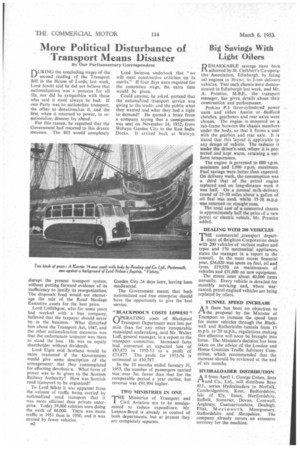D EMARKABLE savings have been
Page 42

If you've noticed an error in this article please click here to report it so we can fix it.
achieved by St. Cuthbert's Co-operative Association, Edinburgh, by fitting oil engines in 30-cwt. to 2-ton delivery vehicles. Two such chassis were demonstrated in Edinburgh last week, and Mr. A. Prentice, M.B.E., the transport manager, has given details about their construction and performance. Perkins P.3 three-cylindered power units and either Austin or Bedford clutches, gearboxes and rear axles were chosen. The engine is mounted on a sub-frame between the chassis members under the body. so that it forms a unit with the gearbox and rear axle. It is stated that this layout is applicable to any design of vehicle. The radiator is under the driver's seat, where it is protected and kept warm, retaining a uniform temperature.
The engine is governed to 600 r.p.m. minimum and 1,900 r.p.m. maximum. Fuel savings were better than expected. On delivery work, the consumption was a third that of the petrol engine replaced and on long-distance work it was half. On a normal milk-delivery round of 25-30 miles about a gallon of oil fuel was used, whilst 35-38 m.p.g. was returned on straight runs.
The total cost of a converted chassis is approximately half the price of a new petrol or electric vehicle, Mr. Prentice added.
































































































